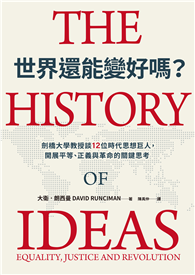How do we define the nature of our business, gather everything that we know about it, and then centralize our information in one, easily accessed place within the organization? Breslin and McGann call such knowledge our ways of working and the place where it will be found a business knowledge repository. All of a company’s accumulated operations data, its manuals and procedures, its records of compliance with myriad regulations, its audits, disaster recovery plans--are essential information that today’s management needs at its fingertips, and information that tomorrow’s management must be sure can easily be found. Breslin and McGann show clearly and comprehensively how business knowledge repositories can be established and maintained, what should go into them and how to get it out, who should have access, and all of the other details that management needs to make the most of this valuable resource and means of doing business. An essential study and guide for management at upper levels in all types of organizations, both public and private.
Breslin and McGann show that once an organization’s knowledge of itself is formulated into its ways of working, its so-called object orientation makes it easily maintained. The repository approach to organizing and consolidating knowledge makes it possible for all of its potential users to access it easily, without having to go to one source for one thing they need and to another for another thing, a tedious and costly procedure in many organizations that have allowed their information and knowledge resources to not only grow but become duplicated as well. The repository approach also makes it possible for management to organize and access information by job functions, and to make it available to employees more easily in training situations. Regulators and auditors are also more easily served. As a result, CFOs will find their annual audit and various compliance fees considerably reduced. Breslin and McGann’s book is thus a blueprint for the creation of knowledge repositories and a discussion of how graphical communication between information systems creators and their client end users can be made to flow smoothly and efficiently.| FindBook |
有 1 項符合
The Business Knowledge Repository: Consolidating and Accessing Your Ways of Working的圖書 |
 |
The Business Knowledge Repository: Consolidating and Accessing Your Ways of Working 作者:Breslin 出版社:Bloomsbury Publishing PLC 出版日期:1998-01-30 語言:英文 規格:精裝 / 222頁 / 24.46 x 16.21 x 2.11 cm / 普通級/ 初版 |
| 圖書館借閱 |
| 國家圖書館 | 全國圖書書目資訊網 | 國立公共資訊圖書館 | 電子書服務平台 | MetaCat 跨館整合查詢 |
| 臺北市立圖書館 | 新北市立圖書館 | 基隆市公共圖書館 | 桃園市立圖書館 | 新竹縣公共圖書館 |
| 苗栗縣立圖書館 | 臺中市立圖書館 | 彰化縣公共圖書館 | 南投縣文化局 | 雲林縣公共圖書館 |
| 嘉義縣圖書館 | 臺南市立圖書館 | 高雄市立圖書館 | 屏東縣公共圖書館 | 宜蘭縣公共圖書館 |
| 花蓮縣文化局 | 臺東縣文化處 |
|
|
圖書介紹 - 資料來源:博客來 評分:
圖書名稱:The Business Knowledge Repository: Consolidating and Accessing Your Ways of Working
內容簡介
作者簡介
JUD BRESLIN is President of the COBRE Group, Inc., a Morristown, New Jersey software development firm that designs, develops, and implements software tools for a variety of industries for various applications. Before founding his firm, Breslin held positions with Touche Ross and Coopers and Lybrand, and was also Deputy Administrator for the U.S. Energy Office. He holds an MBA from the Wharton School and is author of several books, including Selecting and Installing Software Packages (Quorum, 1986).
JOHN McGANN has been in charge of information technology planning at Allied Chemical and American Airlines. He has also been a Vice President of Systems Planning at Chase Bank and an MIS Director for the New York City Finance Administration. With degrees from MIT and Columbia University, he has been Adjunct Professor of Computing Science and has lectured on information technology planning at other universities and at various conferences. McGann performs consulting services and prepares reports on various information technology matters for companies including IBM, Microsoft, Unisys, Chase, and Bank America.
|











